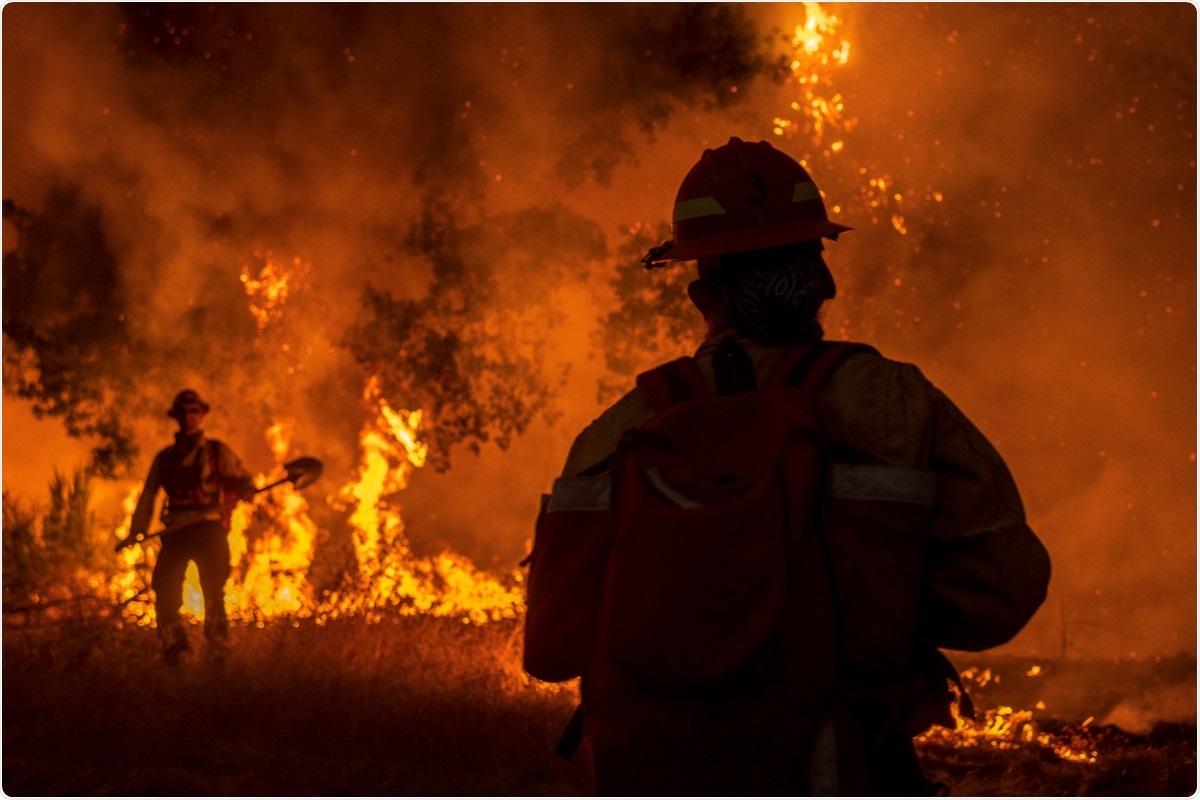benzac ac gel for acne
In 2020 the USA faced the dual challenges of the coronavirus disease 2019 (COVID-19) pandemic and wildfires that burned through millions of acres of grass and woodland. Wildfire smoke contains high concentrations of fine particulate matter associated with acute adverse health effects to the respiratory system and increases the risk of contracting respiratory viral infections. Prior studies have estimated that wildfire smoke could be responsible for a significant proportion of COVID-19 mortality.
A new study recently published in Science Advances investigates the relationship between wildfire smoke and COVID-19 mortality using pollution and COVID-19 incidence and mortality data. The data were collected from 92 counties in three states – California, Washington, and Oregon – utilizing satellite data to identify wildfires and statistical modeling to account for any delayed effects.

Wildfires increase SARS-CoV-2 transmission
Most wildfires occurred between March and December 2020. The research group conducted a multisite time series study where the daily increase in COVID-19 cases and deaths against particulate matter levels during this period. Subsequent statistical models were applied.
Only days with more than 21 μg/m3 particulate matter were considered “wildfire days". The researchers noted that the daily case rate of severe acute respiratory syndrome coronavirus 2 (SARS-CoV-2) and the death rate was higher on wildfire days, exacerbated in locations experiencing extremely high particulate matter concentrations. Such as Mono County, CA, where levels of over 500 μg/m3 were recorded four days in a row. Lag effects were also considered, and the group found that cumulative exposure to high particulate levels was also associated with an increasing rate of infections and deaths over a 28 day period.
Overall, without prescription lisinopril 30 mg the group stated that 52 of the 92 counties included had a strong association between particulate concentration and COVID-19 cases 28 days later. Across counties, a 10 μg/m3 increase in particulate concentration induced an 11.7% increase in cases. The influence of the same 10 μg/m3 rise was heterogeneous between locations. Counties such as Sonoma, CA, and Whitman, WA, saw around a 70% increase in cases per increment rise in particulate matter.
Wildfires increase COVID-19 mortality
The rate of COVID-19 deaths was strongly correlated with particulate matter exposure in 17 of the states, and a daily increase of 10 μg/m3 for 28 subsequent days caused an increase in deaths of 8.4% across all counties. In the most affected counties, Calaveras and San Bernardino, CA, the same daily increase resulted in a 52.8% and 65.9% increase in mortality over 28 days, respectively. Overall this puts the total number of individuals expected to have been infected with SARS-CoV-2 due to daily increasing particulate concentrations at almost 20,000, with 748 excess deaths also attributable.
Air pollution is detrimental to the adaptive immune response against viral challenges. Respiratory irritation and inflammation due to air pollution may make one more predisposed to infection and subsequently exacerbate virus-induced inflammation, resulting in greater mortality. Air transmission of SARS-CoV-2 by aerosols has also been demonstrated, and the authors speculate further possible transmission by particulate matter.
The approximate two-week incubation period of COVID-19 was seen to correlate well with historical pollution levels in most counties, suggesting that even short-term exposure to high concentrations of particulate matter could induce a spike in SARS-CoV-2 transmission. The group also accounted for environmental changes in temperature and humidity that would affect both particulate matter concentration and SARS-CoV-2 transmission. Also, it accounted for adherence to non-pharmaceutical interventions such as mask-wearing, which went some way to explaining the wide heterogeneity observed between locations.
The limitations of this study include that in some locations that met the criteria of increasing particulate matter levels, the pollution even appeared to have a protective influence against COVID-19. However, the group did not distinguish between the source of particulate matter, or that one type may be more detrimental to the respiratory system than others. Further, the group did not track vaccination levels between communities, which would likely strongly influence transmission and death rates.
- Zhou, X. et al. (2021) "Excess of COVID-19 cases and deaths due to fine particulate matter exposure during the 2020 wildfires in the United States", Science Advances, 7(33), p. eabi8789. doi: 10.1126/sciadv.abi8789. https://advances.sciencemag.org/content/7/33/eabi8789
Posted in: Medical Science News | Medical Research News | Disease/Infection News
Tags: Air Pollution, Coronavirus, Coronavirus Disease COVID-19, Immune Response, Inflammation, Mortality, Pandemic, Pollution, Research, Respiratory, SARS, SARS-CoV-2, Severe Acute Respiratory, Severe Acute Respiratory Syndrome, Syndrome, Virus

Written by
Michael Greenwood
Michael graduated from Manchester Metropolitan University with a B.Sc. in Chemistry in 2014, where he majored in organic, inorganic, physical and analytical chemistry. He is currently completing a Ph.D. on the design and production of gold nanoparticles able to act as multimodal anticancer agents, being both drug delivery platforms and radiation dose enhancers.
Source: Read Full Article
